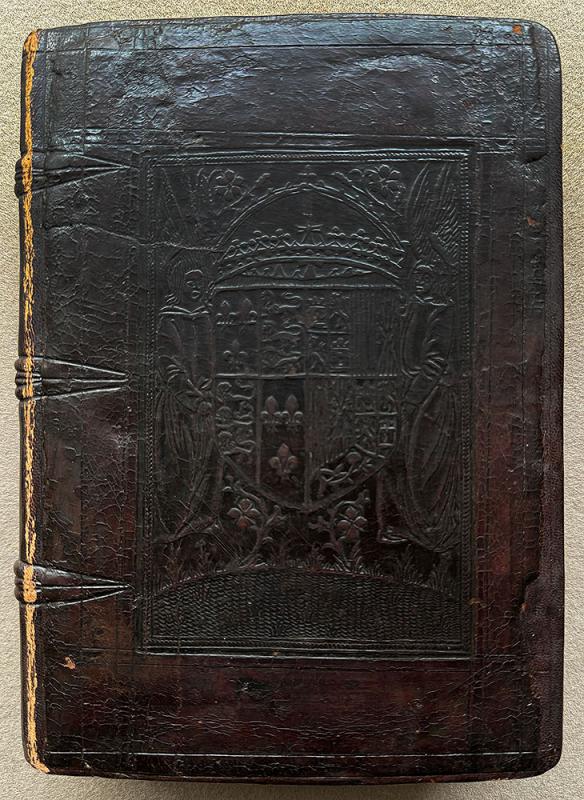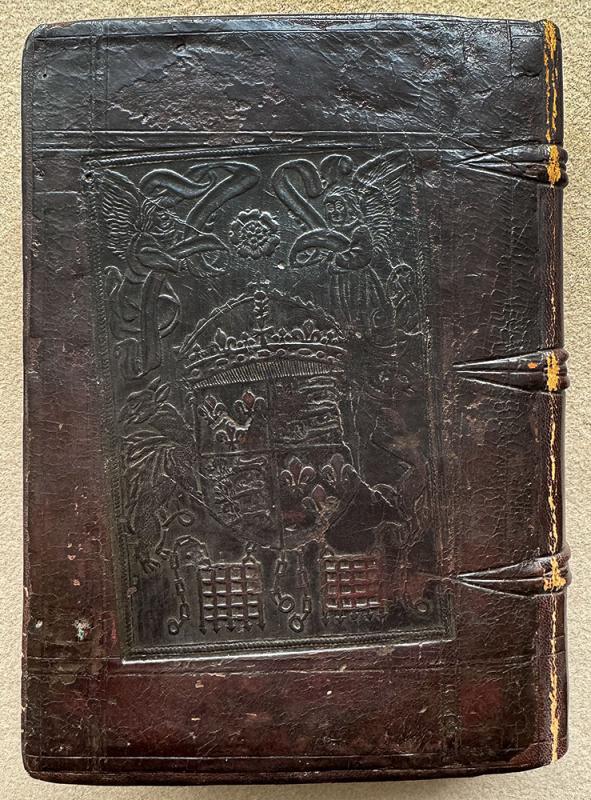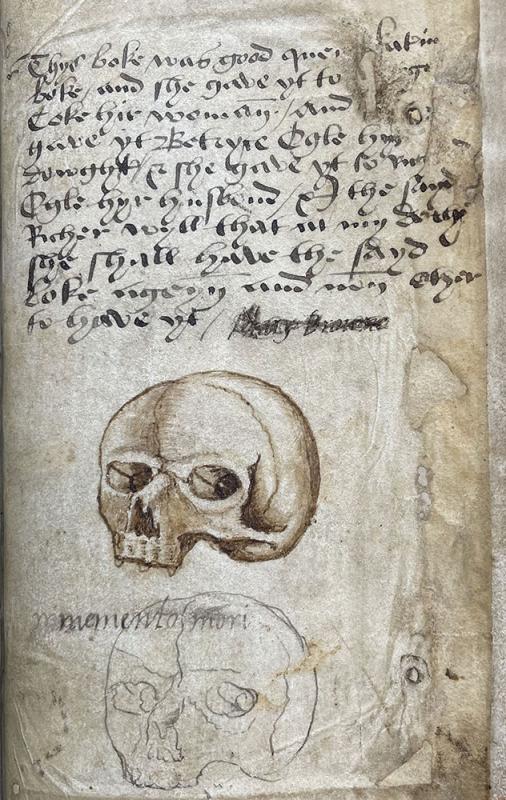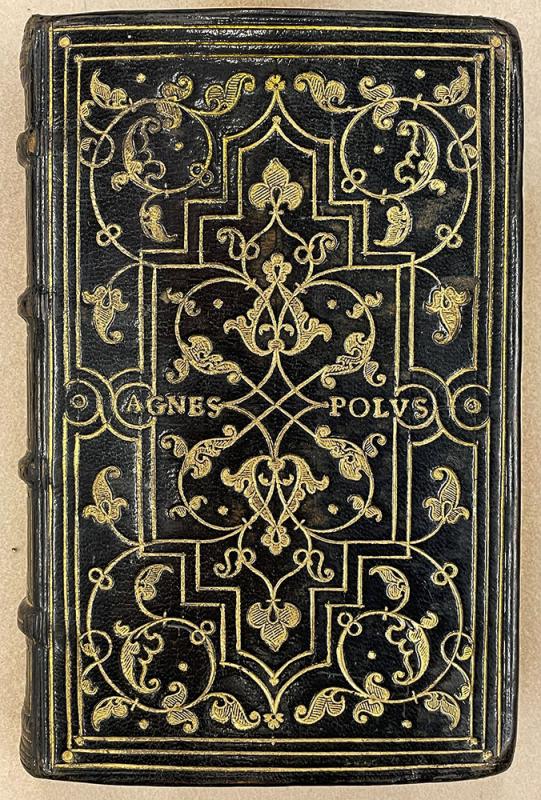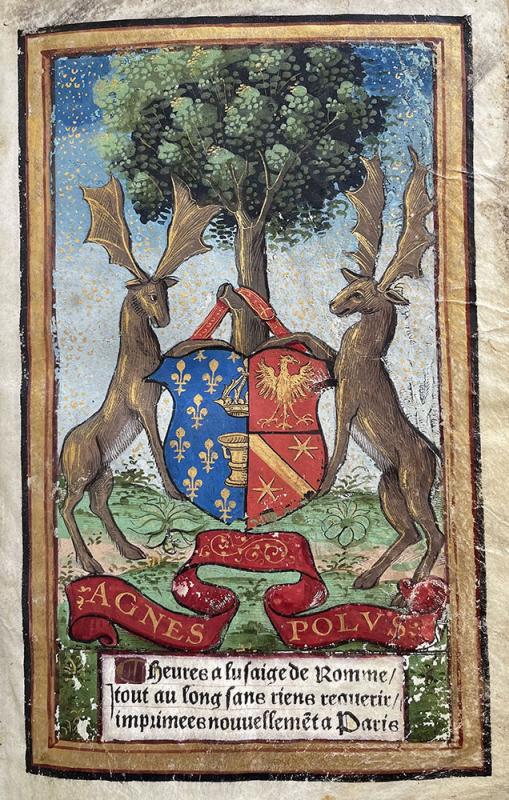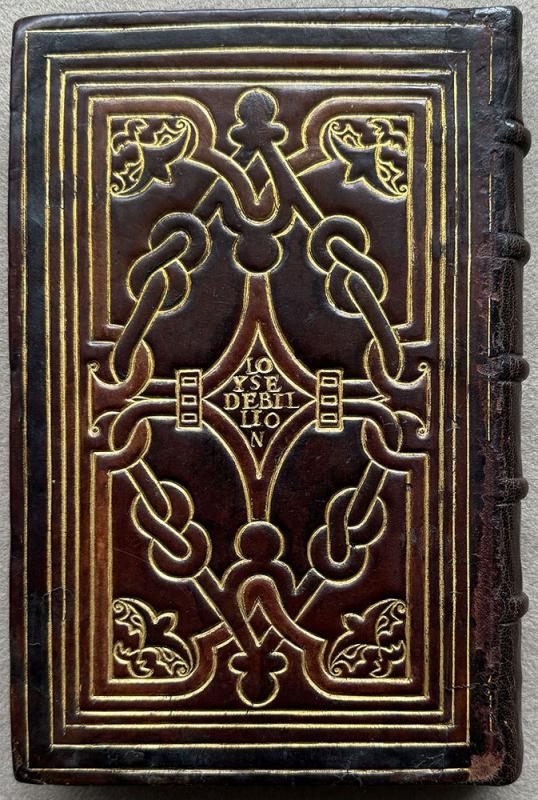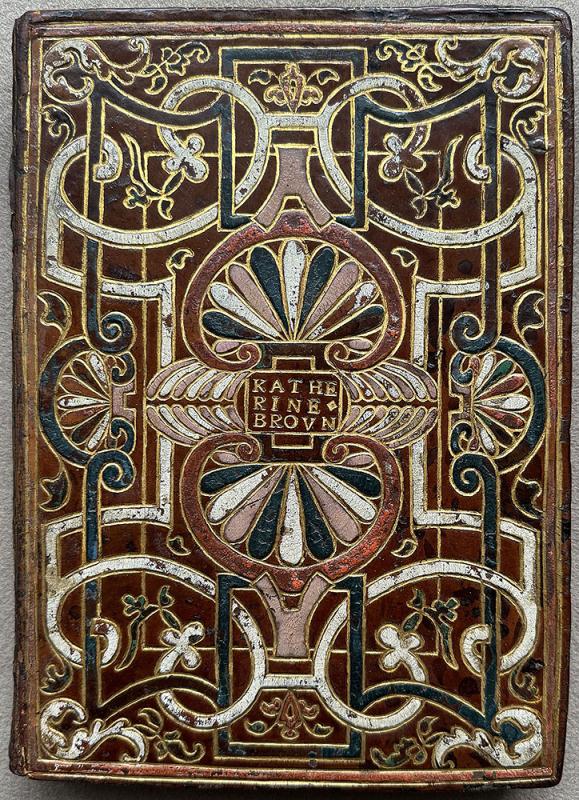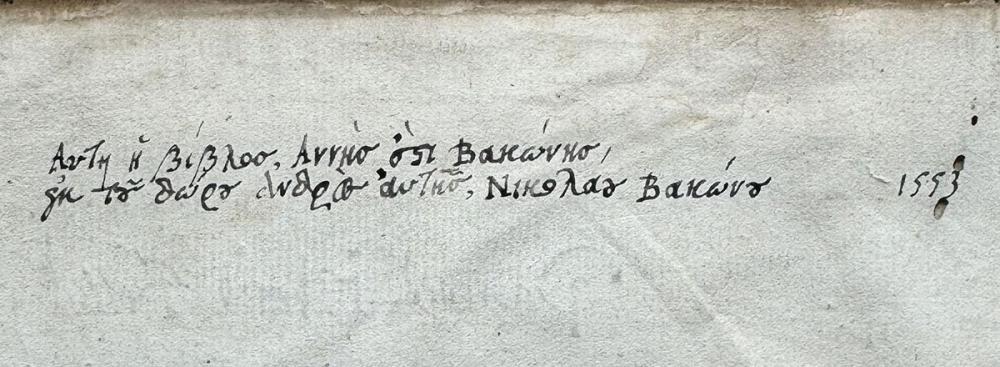Tracing a book’s ownership history—its provenance—is for me one of the most enjoyable, if sometimes frustrating, aspects of book history. This post will highlight the provenance of European books owned by women during the sixteenth century and focus on how ownership might be denoted on the binding of the book, particularly through the inclusion of a personal name. It was quite unusual for women in the sixteenth century to have their name written on a book’s cover—armorials were the standard way to identify ownership—and yet the Morgan holds several examples of this rare practice. Most of the books described below are Books of Hours, or prayerbooks. Such devotional books were typically deemed the most appropriate for women readers, especially given as wedding presents, and the copies that exist overwhelmingly indicate female ownership. It is often difficult to identify women owners: individuals with higher social status, such as royals and nobles, are found more readily in the historical record than a woman in the merchant class, and women typically only appear when they get married or give birth to male heirs. For these reasons, women readers and book owners have long been ignored in favor of more well-documented and seemingly more significant male counterparts, but projects such as Early Modern Female Book Ownership are helping to finally highlight female readers. A few of the names that follow might be familiar to you; several will not be.
Let’s start with Catherine of Aragon (1485–1536), the first of Henry VIII’s maligned and ill-fated wives. It was common practice for the heraldic coat-of-arms of royals and nobles to decorate the covers of their books, however—and this is a significant issue—the presence of such an armorial does not necessarily signify personal ownership. A monarch’s armorial was a symbol of the state, and when it was used on a book’s cover, it could mean that the book was part of the royal library (but never in the hands of the monarch) or was a gift to/from the monarch. It is more likely, however, that the armorial was simply an indication of contemporary cultural affiliation or the certain social standing, or hoped-for standing, of the owner. The armorials of Henry and Catherine decorate an English binding made about 1530 for a missal (Christian liturgical book) printed in Paris in 1527 (PML 18384).
The front cover has a decorative panel stamped in the center depicting two angels holding the royal arms of Henry (left half) and Catherine (right half); the rear cover shows the English royal arms with the Tudor symbols of the rose (above) and portcullis (below). There are several books with bindings similar to this in the Morgan’s collection, none of which, however, can specifically be attributed to the personal libraries of Henry or Catherine. While the volume may have been used for religious services at the Tudor court or any affiliated church or chapel, there are no other signs of ownership to indicate how, where, or by whom it was used. For another Henry and Catherine armorial binding (using the same panels) on a non-liturgical work, see Morgan Incunable Bindings Online.
A book actually owned by Catherine of Aragon is a Book of Hours printed in Paris in 1528 (PML 1034). Although now in a nineteenth-century binding by Riviere & Son, an inscription at the end details how the book belonged to “good quen[e] Kat[er]in,” who gave it to Margaret Pennington Cooke (d. 1552), a lady-in-waiting to Catherine and her daughter Princess Mary, who in turn passed it down to her step-daughter, Beatrix Cooke Ogle (1501–1561).
Another copy of this same prayerbook was owned by Anne Boleyn and discussed in a previous Morgan blog post and exhibition in England.
Some book owners are not so easily recognizable. Another Parisian Book of Hours retains its elaborate French calf leather binding with gold-tooled decoration produced about 1520 (PML 1063).
The binding is decorated in a very fashionable contemporary French style of foliate ornaments, derived from Italian bindings, which were themselves inspired by Islamic binding decoration. Across the front and rear covers is the name “Agnes Polus,” which is repeated on the title page with an elaborately painted coat-of-arms (Agnes’s is on the right and her husband’s on the left). If indeed given as a wedding present, this may explain her name coupled with her matrimonial armorial, although the preference for Agnes’s name on the covers but the armorial hidden inside is atypical for the period. Unfortunately, I have yet been able to identify the coats-of-arms of Agnes or her husband with any version of the name Polus (Pol-/Bol-).
I have fared only slightly better with “Damoyselle Loyse de Billion” a name tooled on the covers of a Book of Hours printed in Lyon in 1548 and bound in calf leather with a large gold-tooled interlace panel with painted red highlights (PML 15442).
We can likely modernize the spelling of the French surname to ‘Billon’, and a certain Louise de Billon (died 1583) was the wife of Antoine Barillon (1531–1572), seigneur de Mancy. While the dates of Louise’s life and this book make reasonable sense, especially considering what may have been her marriagable age, without further context of provenance in the book or other books identified in this same way, “Damoyselle Loyse” will remain a mystery.
An elaborately gold-tooled and painted Parisian binding of about 1550 was decorated for “Katherine Broun” (PML 15433). Again, the binding is on a Book of Hours with texts that follow the Sarum use, that is versions of prayers specifically used in England. Thus, we may assume that this Catherine Brown was in England or an English woman living in northern France or Low Countries, where there were significant English mercantile and commercial connections. The interlaced strapwork and foliate pattern on the binding is produced from a single, large panel that impresses the entire design onto the cover, which would then be painted. This same panel is found on other bindings, including a 1549 Book of Hours printed in Lyon and bound for Marie-Catherine Gondi, dame du Perron (d. 1574), a close friend of Catherine de Medici, Queen of France (Lyon, Bibliothèque municipale, Rés 357302). The same binding on a book for such an elevated French noblewoman, may indicate the social level of the otherwise unidentified Catherine Brown.
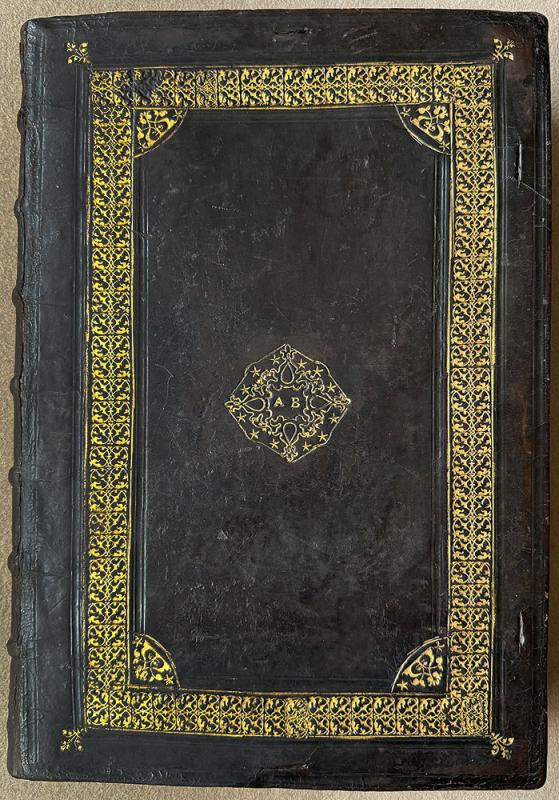
St. Basil, Bishop of Caesarea, Opera (Basel: Hieronymus Froben and Nicholas Episcopus, 1551). Gift of Roland L. Redmond, 1944; PML 38069, front cover.
Our final example is of a more well-documented woman: Anne Cooke, Lady Bacon (1528?–1610), the wife of Sir Nicholas Bacon (1509–1579) and mother of Sir Francis Bacon (1561–1626), and the niece of Beatrix Cooke Ogle, identified above with the prayerbook of Catherine of Aragon. Anne was well-educated and translated two works that were published in her lifetime. Her level of education and knowledge of the Greek language is seen in her copy of the work of St. Basil of Caesarea, printed in 1551 (PML 38069).
Her ownership of the volume is inscribed—in Greek—inside the cover, “This book belongs to Anne Bacon, the gift of her husband Nicholas Bacon 1553,” and with her gold-tooled initials on the cover. The binding was produced by the bindery of Thomas Berthelet (died 1555), the royal printer and bookbinder under Henry VIII. While Anne Bacon is relatively well-known, especially for her erudite correspondence to notable (male) individuals of her time, as well as extensive correspondence with her son, her book ownership has not been examined. The books Anne owned, like this Morgan volume, reflect her educated position and are an important, and so-far ignored, aspect of this important Renaissance female scholar. Step by step we are gaining more insight into the male-dominated world of book ownership, and even the unidentified Agneses and Catherines shed more light into the real history of Renaissance books.
John McQuillen
Associate Curator of Printed Books & Bindings
The Morgan Library & Museum

